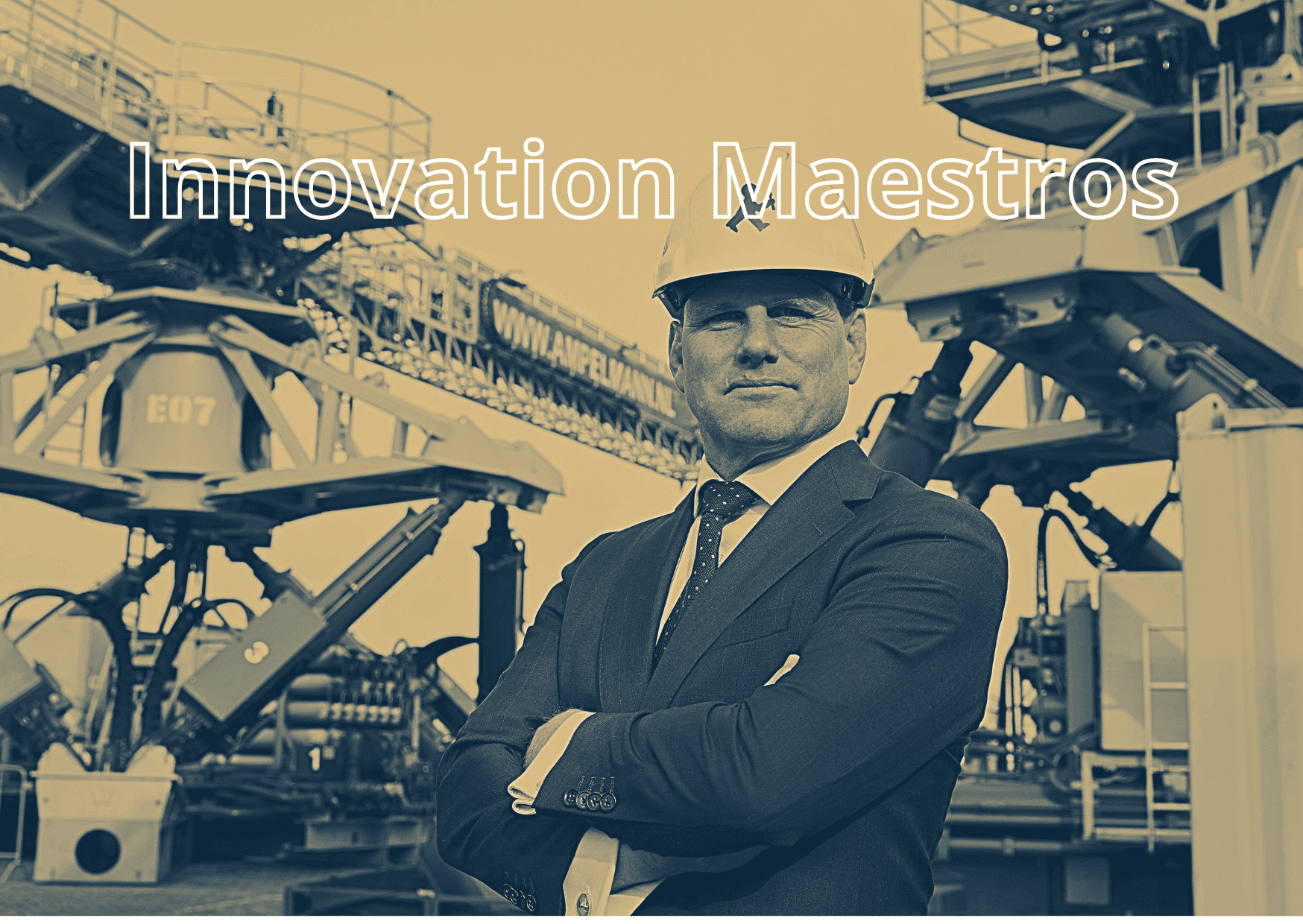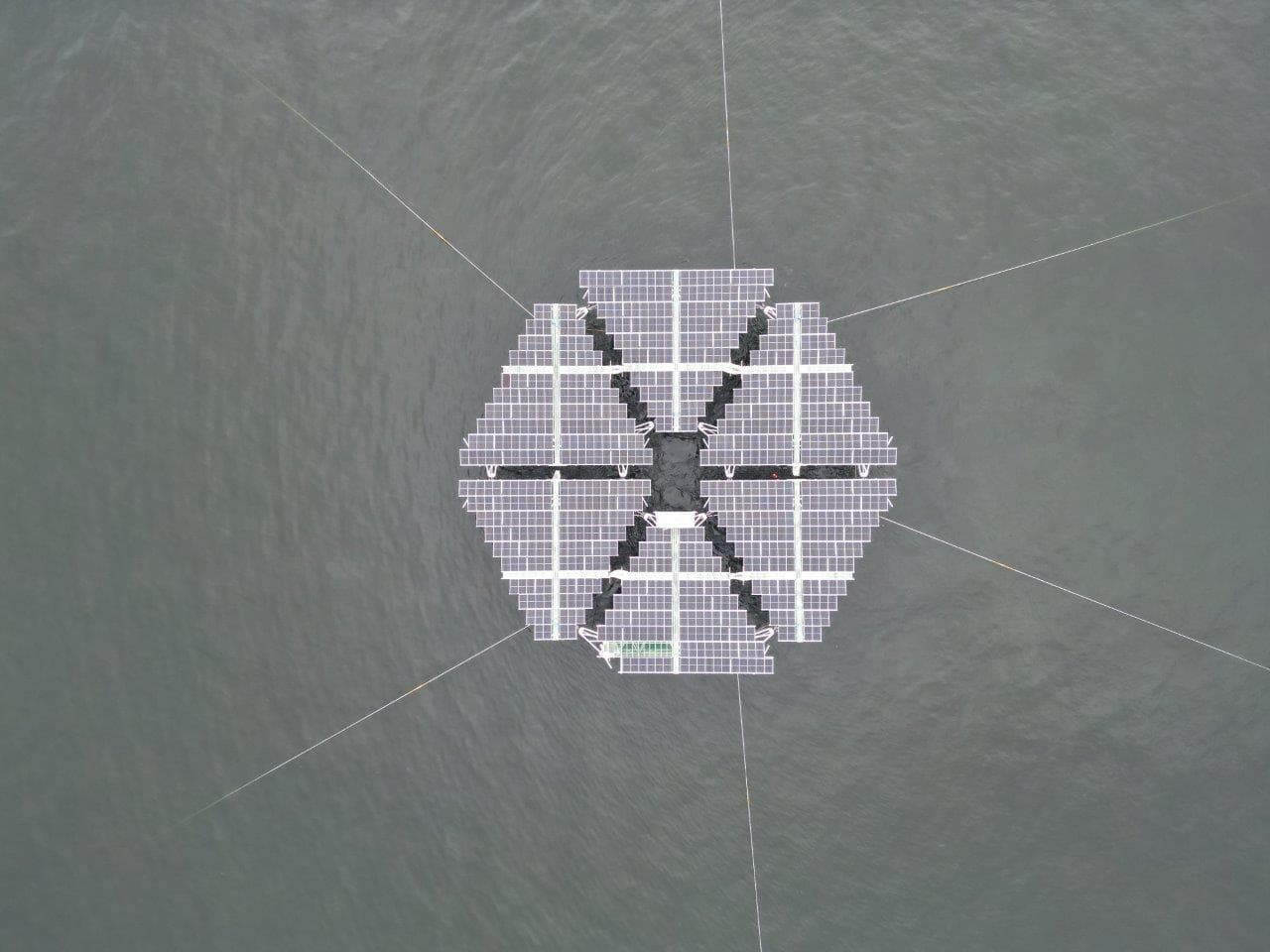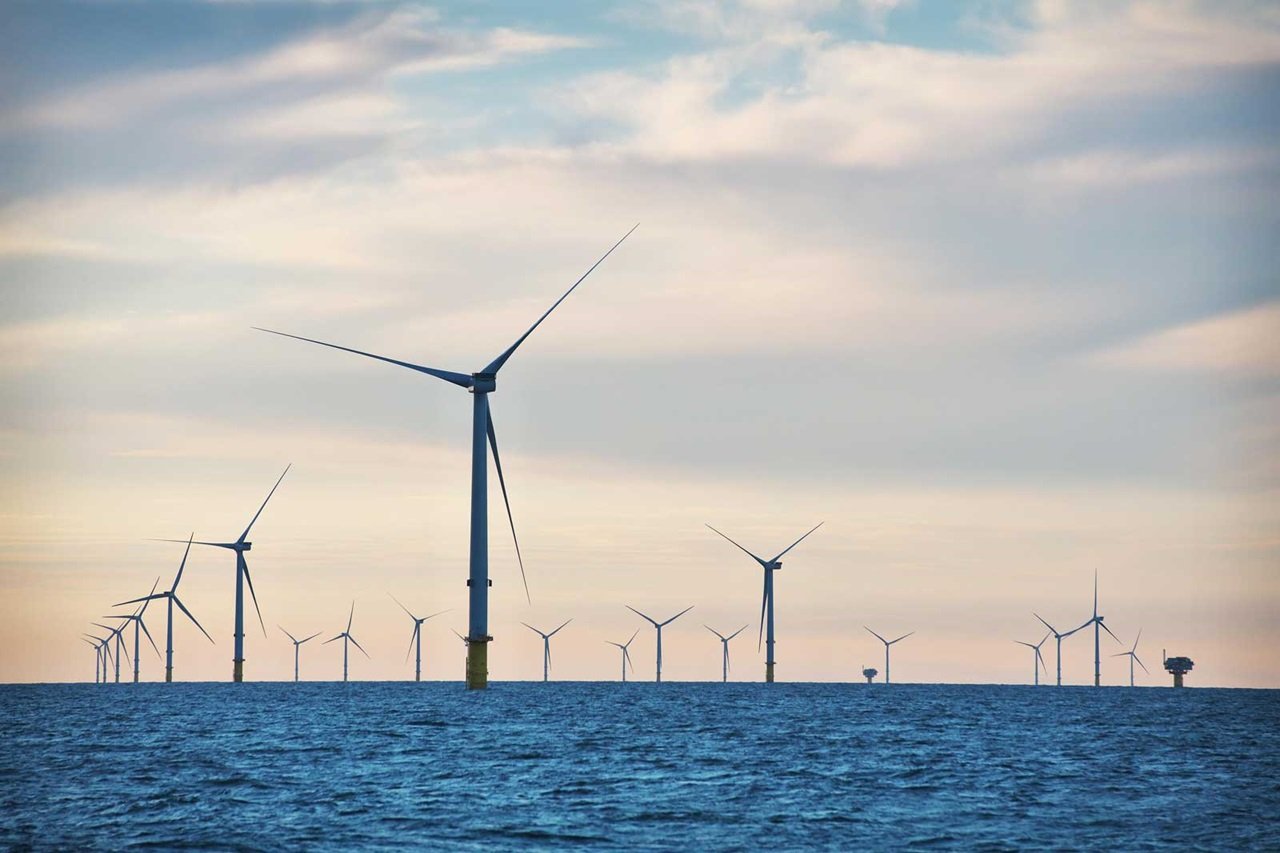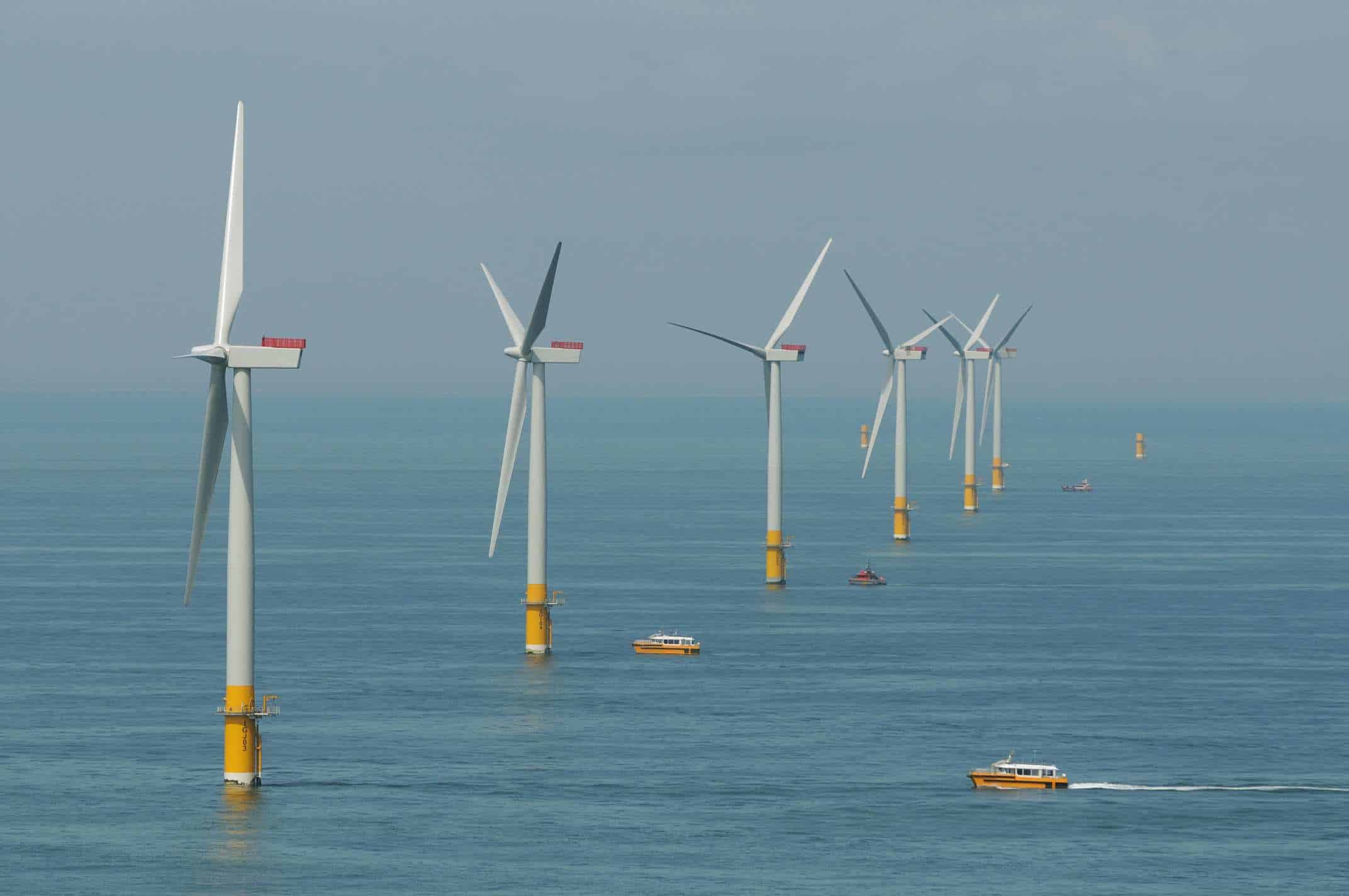
Even if people already have arguments against the construction of offshore windmills, there is still another obvious one besides how the horizon would be ruined. The CO2 footprint of each windmill – once you calculate the emissions associated with their construction, transport and installation at sea. Inventor Herm Bussemaker has done something about the latter. Thanks to his Gravity Base Foundation alternative, the CO2 footprint of these types of windmills is considerably smaller.
Together with Geert Jan Hoek, he founded Monobase Wind, the company which is going to bring this foundation to the market. Bussemaker and Hoek already knew each other. Both worked at Heerema Marine Contractors, respectively as maritime engineer, and project manager and general counsel.
The offshore wind market faces a number of issues. For instance, the use and hire of crane vessels is very expensive and these crane vessels are not readily available everywhere. Monobase Wind is an engineering firm that designs integrated solutions in the field offshore wind turbine foundations. They have a solution that makes onshore assembly of foundations for wind turbines possible. Which means that just three standard tugboats are needed instead of expensive crane vessels.
What kind of company is Monobase Wind?
“Monobase Wind is a Dutch engineering firm that is focused on the offshore wind industry. We have developed what we refer to as a Gravity Base Foundation (GBF 2.0). It is the only integrated foundation in the industry that makes it possible to install wind turbines at sea without using crane vessels. Three standard tugboats are all it takes. The complete wind turbine (foundation, tower, nacelle and blades) can be assembled on land and in a harbor. This results in lower costs and a reduction in CO2 emissions incurred during transport and installation. We plan to do a pilot test this year with our floating offshore wind turbine foundation. We’re focusing on the international market, as the offshore wind industry is growing exponentially worldwide. And our technology can solve problems in, for example, Scandinavia, Europe, North and South America, the United Kingdom, and Asia.”

How did the idea for the company first come about?
“When the plans for offshore wind farms began to take shape, Herm Bussemaker (CTO) foresaw that problems would arise where foundations were concerned. Drawing on his experience in designing and applying maritime and offshore technology, he pinpointed the technical limitations of foundations in terms of water depths, logistics and costs. This is how he came up with the idea of the Monobase ‘Integrated Gravity Base Foundation.’ An alternative to the foundations currently being used.”
Is there a lot of competition in this area?
”There isn’t much competition in this area because the industry is very conservative and extremely capital-intensive, which means there isn’t much innovation happening.”
What are the biggest obstacles that you come up against?
“The biggest obstacle is definitely the final hurdle before commercialization: installing a prototype. There are two things that make this difficult. That’s location and funding. The main challenge is finding a suitable location. We can’t just install a turbine with our foundation at any given location. The location must meet the following criteria: the proper water depth up to 40 meters, a license from the relevant government to install the turbine and have an accessible grid connection nearby.”
What kind of solution does Monobase offer?
“The concrete foundation of Monobase Wind can be compared to two concrete donuts. Both are hollow inside. The bottom concrete donut fills up with water so that the foundation and the turbine sink to the bottom. The upper part stays afloat and serves as a kind of swimming aid which makes it virtually impossible for the tower and turbine to topple over. Once the lower part reaches the bottom, the upper concrete caisson (a watertight chamber used as a foundation, ed.) fills up with water, so that it also sinks to the bottom in a controlled way with the help of gravity.
This makes it possible to install a wind turbine at sea without having to drill any piles. On some seabeds, such as rocky terrains, it is not possible to drill piles. So, this is a great solution. Furthermore, damage to the seabed and biodiversity is much lower compared to existing foundations. Nor is there any need to take the reproductive seasons of fish species into account. As far as CO2 emissions are concerned, due to the short and inexpensive offshore installation method, a 90% reduction in CO2 emissions is made in comparison to traditional installation methods. The concrete foundation also functions as an artificial reef, which in turn supports biodiversity.”
What do you gain from this method?
“Monobase Wind, in consultation with Dutch knowledge institutes which include ECN/TNO and after tests at MARIN (the Maritime Research Institute Netherlands), have calculated that it is very likely that a cost reduction of 12 to 15 % per installed wind turbine can be realized. This will save developers and wind farm owners around €800,000 per wind turbine. This saving is due to the construction and installation methods. As well as the fact that very heavy turbines (12 MW+) can be placed on it (scaling up or larger turbines use fewer towers). And the fact that it is easy to remove when an installation has reached the end of its lifespan.
This solution also enables larger and heavier turbines to be installed. As this foundation is more stable than conventional foundations, since the concrete base provides significantly more stability with its sizeable diameter. Moreover, this rig can also be installed at greater depths. Whereas there are technical limits when it comes to drilling piles. If something has to be 40 meters deep, another 30 meters of piles have got to be drilled. With the solution provided by Monobase Wind, the pile can simply be positioned from the sea surface to a depth of 70 meters. Traditional methods are unable to reach these depths for the installation of windmills.”
What are you all really proud of?
“We are very proud of the milestones that have been achieved so far. From developing a patented design to raising funding and forming a consortium with the support of leading companies. Previously we won the Vernufteling Award (organized by the Dutch Royal Institute of Engineers, KIVI). Also, we’ve recently been nominated as one of the 25 best climate innovations in Accenture’s Blue Tulip Awards (the finals have yet to take place).”
What are your plans for the coming year?
“We’re currently working on further developing our patented floating foundation. We hope to be able to do a pilot test for this over the coming year. Furthermore, we will of course continue with the commercialization of GBF 2.0. We have several excellent demonstration sites in our sights and have made progress in discussions with the developers behind those projects. In addition, we are in talks with a Dutch offshore giant regarding a potential cooperation.”
What is your goal for the next 5 years?
Our goal for the next 5 years is to successfully commercialize our GBF 2.0 and the ‘floating foundation’ and thereby scale up our company. This means that both technologies will be applied in large-scale offshore wind projects. We want to advance substantial business operations in Europe, North and South America, and Asia’.
You can read more articles about start-ups here.








